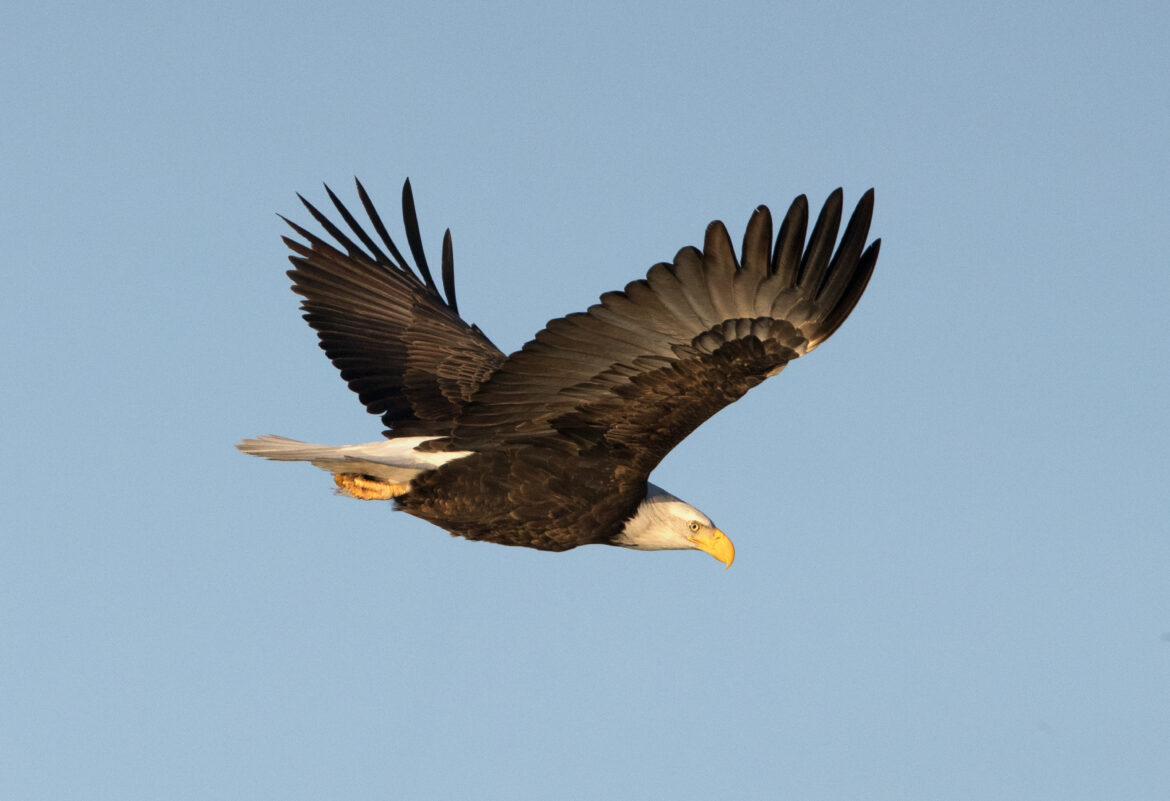By Celeste Silling
A few weeks ago, I saw a Bald Eagle in Brazoria County. It was flying over Highway 288 as I was driving North by Angleton. I saw it out the windshield, did a double take, then had to actively force myself to keep driving straight and not go looking for it. It was exciting! I had seen these beautiful birds before, but they are relatively uncommon on the Upper Texas Coast, making it all the more exciting.
In 1963, there were less than 500 nesting pairs of bald eagles in the continental U.S. In 1978, Bald Eagles were listed as an endangered species throughout the lower 48 states. This was largely due to DDT, a pesticide that was broadly used in the 50’s and 60’s. The pesticide washed into waterways, where it was absorbed by fish. When the eagles ate the fish, they ingested the poison. Eagles who consumed too much DDT-laced fish were unable to lay strong eggs, so when they nestled down to incubate their eggs, the shells would crack, and the brood would be lost.
Thankfully, in 1972, the dangers of DDT became well known after Rachel Carson published her book “Silent Spring,” which documented the harm being done by these pesticides. DDT was banned shortly after, and the eagle population, with the help of conservation-minded humans, was able to spring back. This took captive breeding, protection by law enforcement, studies by researchers, and much more. Looking back, the rejuvenation of the Bald Eagle population is a truly spectacular conservation story!
By 2007, there were at least 9,789 nesting pairs of Bald Eagles in the lower 48 states. Today, they are no longer listed as threatened or endangered, which is a relief! Bald Eagles can be found in Texas year-round, and a few of them even nest in our area. Some of them are only present here in the winter, as they’ve flown south from their breeding grounds to warmer climates.
If you’re trying to see a bald eagle, look for an area with lots of fish. Eagles will hunt in swamps, lakes, bayous, and in coastal areas. Around here, Armand Bayou Nature Center and Brazos Bend State Park are probably your best bets. Both have had Eagles spotted on their grounds recently. Even so, there’s no guarantee you’ll see a Bald Eagle if you go to these places.
Nesting Bald Eagles are even harder to find. Breeding populations occur in East Texas and in coastal counties from Rockport to Houston. There are only about 150 nesting pairs in the state of Texas and they have spread out to their own territories. These nests are enormous, so they’re hard to miss or mistake for anything else. They’re about eight feet wide and woven into tree branches.
If you’re looking for more specific information about Bald Eagle sightings, try eBird. It’s a website and phone app made by the Cornell Lab of Ornithology, and it’s free to use. You can get up-to-the-minute reports of bird sightings in your area, and can even search by species. It’s probably the most reliable way to find a Bald Eagle on the Upper Texas Coast.
Photo Credit: Mike Williams
Photo Caption: Bald Eagle flying overhead

